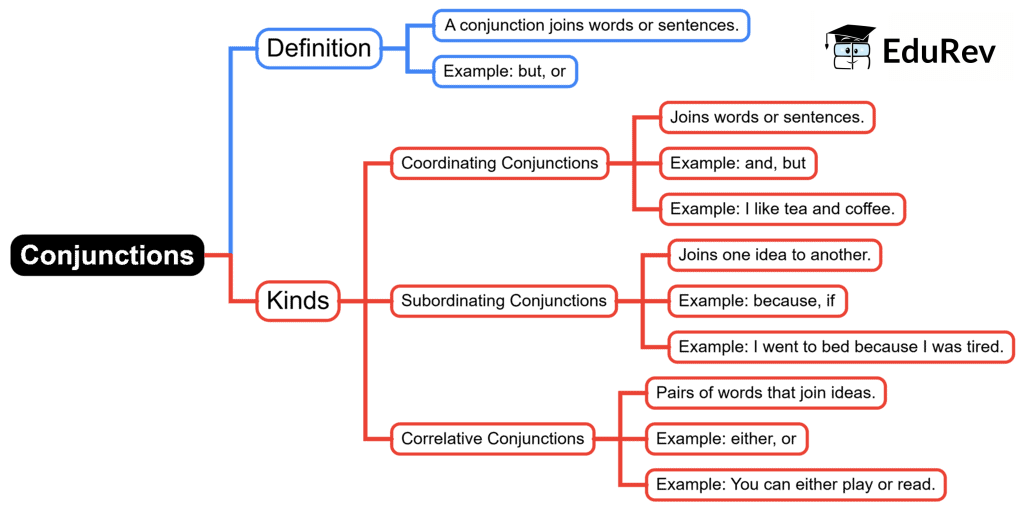Class 1 Exam > Class 1 Notes > English Grammar for Junior Classes > Mind Map: Conjunctions
Mind Map: Conjunctions | English Grammar for Junior Classes - Class 1 PDF Download

The document Mind Map: Conjunctions | English Grammar for Junior Classes - Class 1 is a part of the Class 1 Course English Grammar for Junior Classes.
All you need of Class 1 at this link: Class 1
|
18 videos|189 docs|31 tests
|
FAQs on Mind Map: Conjunctions - English Grammar for Junior Classes - Class 1
| 1. What are conjunctions and why are they important in English grammar? |  |
Ans. Conjunctions are words that connect clauses, sentences, or words within the same clause. They are important because they help to create complex sentences, allowing for more nuanced expression and clearer relationships between ideas. For example, coordinating conjunctions like "and," "but," and "or" link similar ideas, while subordinating conjunctions like "because," "although," and "while" introduce dependent clauses that add detail or context.
| 2. What are the different types of conjunctions? |  |
Ans. There are three main types of conjunctions: coordinating conjunctions, subordinating conjunctions, and correlative conjunctions. Coordinating conjunctions (e.g., and, but, or) connect words or groups of words of equal importance. Subordinating conjunctions (e.g., because, although, since) connect an independent clause with a dependent clause. Correlative conjunctions (e.g., either...or, neither...nor) work in pairs to connect equal elements in a sentence.
| 3. How can I use conjunctions effectively in my writing? |  |
Ans. To use conjunctions effectively, ensure that you vary your sentence structure to avoid monotony. Use coordinating conjunctions to combine similar ideas, and subordinating conjunctions to create complex sentences that provide more information. Additionally, be mindful of the flow of your writing; conjunctions should enhance clarity and coherence, helping readers understand the relationships between your ideas.
| 4. Are there any common mistakes to avoid when using conjunctions? |  |
Ans. Yes, some common mistakes include using conjunctions to create run-on sentences or fragments. It's important to ensure that the clauses connected by conjunctions are related and properly structured. Another mistake is misplacing conjunctions, which can lead to confusion. For example, using "although" without a dependent clause following it can leave the reader hanging.
| 5. How can I practice using conjunctions in my writing? |  |
Ans. You can practice using conjunctions by incorporating them into your writing exercises. Try rewriting simple sentences, combining them with conjunctions to create more complex structures. Additionally, reading varied texts can help you see how authors use conjunctions effectively. Finally, consider doing grammar exercises specifically focused on conjunctions to reinforce your understanding and application of their use.
Related Searches















